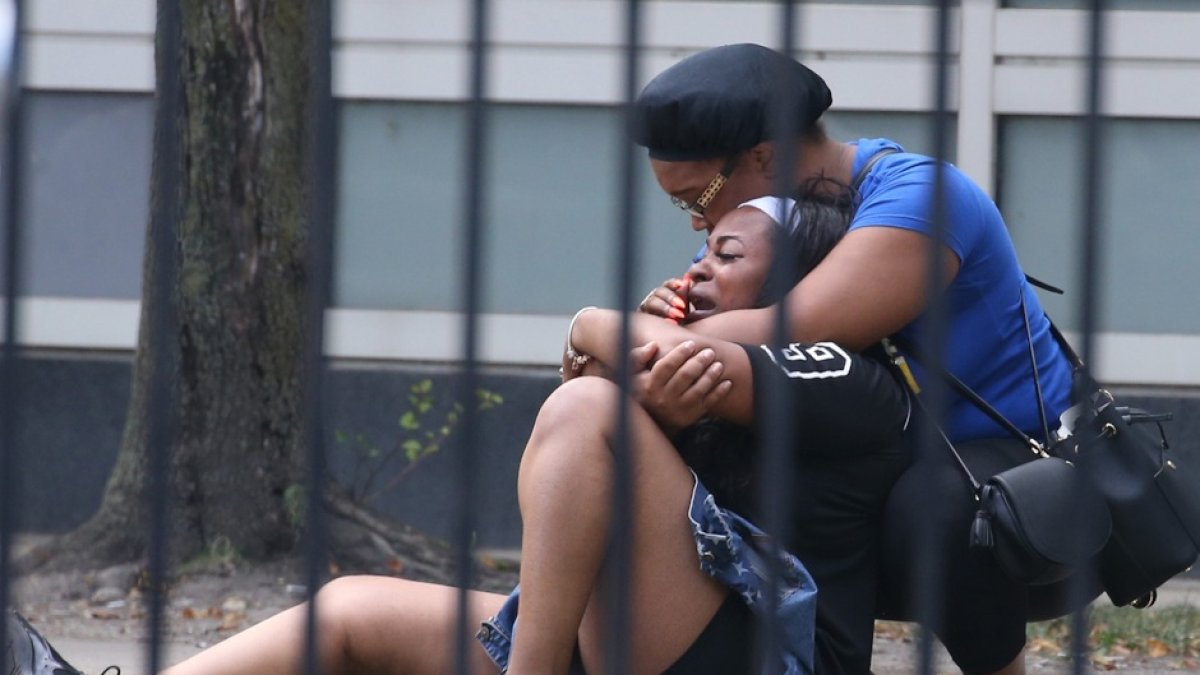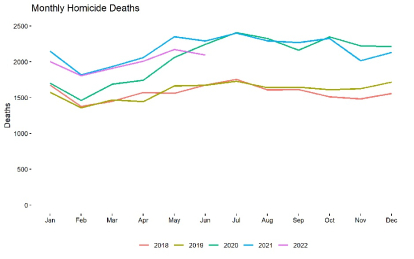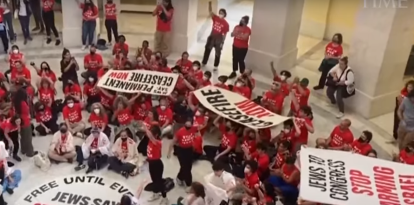Homicides have increased more in counties that vote Democratic
The increase for the black population (9.7 per 100,000) is 25 times that of the white population and is higher than the national average.

Chicago, 18 de agosto de 2018 / Cordon Press.
It is reasonable to think that the two major parties apply different policies and that said policies impact social issues, such as crime. But crime, like any other problem in society, is a complex phenomenon.
For example, Democrats often point to Republican states, which have higher crime. Does that mean that Republican, tougher-on-crime policies are less effective than Democratic leniency? Rafael A. Mangual, Nick Ohnell fellow at the Manhattan Institute, believes that the state-by-state comparison is not meaningful, because crime is a more local phenomenon. For example,
Democratic cities and crime
According to official data collected by The Heritage Foundation, 27 of the 30 cities with the highest crime vote Democratic. If Republican states have larger cities than Democratic states, crime will be higher. But not because of Republican policies, because of the policies implemented in the big cities, which are overwhelmingly run by Democrats.
Two elements have contributed to the fact that cities governed by Democrats are "softer" on crime. On the one hand, the financial support of George Soros favors police reform measures, and Democratic candidates who receive his funds often share his vision in turn. And, in particular, to progressive prosecutors. On the other hand, these reforms, such as defunding the police, or the decision not to prosecute less serious crimes, got a big boost after the death of George Floyd in May 2020.
Crime rate falls slightly in 2022
City Journal's Robert VerBruggen has used the latest crime data update to rethink this problem. The researcher uses homicide data from the Centers for Disease Control (CDC), which allows him to sort those data by geographic and demographic criteria. The most common source for this data is the FBI, but the their statistics are currently incomplete.
Based on the CDC data, it appears that crime, which rose in the pandemic years (2020 and 2021), began to decline in 2022; at least during the first six months of last year. Analyst Jeff Asher, who collects data from police departments, reached the same conclusion. The available data for 2022 shows that crime decreased by 4.7% compared to the same period in 2021.

Number of homicides per month, by year / City Journal, with CDC data.
Increase in crime seen among the black population
To understand the issue, it is useful to sort the data by other criteria. VerBruggen and his colleague Christos Makridis compared the data from 2018-2019 with 2020-2021. They analyzed the two years before the pandemic with the those in which the COVID had the greatest impact.
In 2019, there was a homicide rate of 5.8%. In 2020, it rose to 7.5%, and in 2021 to 7.8%. One of the authors' findings is that the increase is due almost entirely to the black population, which suffers more homicides than any other group. The increase in the homicide rate for the black population (9.7%) is much higher than in the white population (0.4%). This increase for the black population alone is higher than the average rate for the country.
This conclusion reinforces a report by the American Medical Association, which collected homicide data over 32 years, from 1990 to 2021. Currently the black population is the only one for which homicide levels reach those of the 1990s.
Major increase in crime in Democratic counties
VerBruggen's original question still stands: Is there a relationship between crime and the policies of one party or the other? When analyzing data by county, there appears to be a very significant relationship between Democratic votes in the 2020 presidential election and the incidence of crime.
This could mean either that Democrats are more concerned about crime or more affected by it. However, the discourse of both parties seems to indicate otherwise. The logic of this research is that counties with a higher Democratic vote will adopt more Democratic policies. And the question is: How did the 2020 election affect the increase in crime from 2018-2019 to 2020-2021?
However,

























